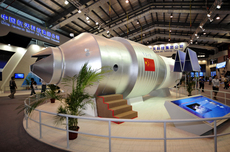 On 05 November 2008, the China International Aviation & Aerospace Forum was held which showcased the latest China-made gear for this year.
One of the visitors of the show was the renowned military technology fan named Huang Bo. According to him, he spent $150 or 1,000 Yuan upon his trip to Anhui province to get a look of the latest gear.
He said, “The J-10 fighter is the biggest highlight for me”. This year, when news photos proved it would be in Zhuhai, I booked my ticket immediately”.
Among these gears are the different types of Unmanned Aerial Vehicles (UAV’s).
The system engineering department director at the China Aerospace Science and Technology Corporation (CASC), Wang Weidong, stated that the medium-range CH-3 is one of the stars of China-made UAV lineup. According to him, “The vehicle has a payload of nearly 100 kg and provides a platform that can be used in the future to carry air-to-ground weapons”.
The enormous camouflaged vehicle or China's Hummer is also making its very first appearance on the show. Also, there is the WS-2 multiple launch rocket system.
An employee from the marketing department of CASC named Wang Wei said that the maximum firing range of the rocket system is 200 kilometres, a distance that only some launchers could match.
The show also launches the portable FN-16 air-defence system, which is the latest version of FN-6, with improved attack capability.
 Pakistan and China which are strategic partners, agreed to enhance their collaboration in the areas of space science and technology. China can move space technology in the South Asian country, while Pakistan in turn, can help China in space through the establishment of a station on its territory to help track Chinese satellites.
It has been reported that the two sides had agreed that the national space agency of Pakistan, SUPARCO (Space and Upper Atmosphere Research Commission) will create a group that would negotiate the acquisition of satellites from China. In 1962, SUPARCO was established under the federal government as an autonomous research and development organisation.
With the bilateral collaboration of Pakistan and China in the space industry, the two countries could span a broad spectrum including clean energy technologies, cyber-security, atmospheric and earth sciences, climate science, clean water technologies, marine sciences, and basic space.
Pakistan’s Prime Minister sought for the cooperation of China in space technology and rocket science. The space programme of Pakistan is aimed at advancing research in space science and allied fields, promoting space science and technology through peaceful applications, and improving indigenous capabilities in space technology for the socio-economic development of the country.
China is the only country viewed by experts in Pakistan that’s in a position to transfer their space technology to Pakistan.
China committed to collaborate with Pakistan to launch over the next five years three Earth-resource satellites.
 _The government of Nairobi will be preparing the guidelines on handling applications which are genetically modified. The scheme is done by the government as their first step in advancing the country’s production in agriculture through biotechnology.
Professor Shaukat Abdulrazak, National Council for Science and Technology’s head, had revealed that a strategy paper regarding how technology will benefit the people will be released on Thursday. According to him, the paper will be released by the Ministry of Higher Education, Science and Technology.
Last Monday, William Ruto, agriculture minister, assured the public that the Biosafety Bill will be passed and be eventually implemented. According to a speech released by Ruto "We have done enough lobbying to ensure that this time the Bill is passed”. He also added, "My desire is for all African countries to adopt an enabling policy for the development and application of biotechnology. This will fast-track the integration of Africa in the global bioeconomy.”
The decision of Ruto to use biotechnology has received the support of the African Union just yesterday. Ms. Rhoda Tumusiime, member of the African Union, had also admitted that the Assembly of the African Heads of State and the Government is also in favour of the adoption of genetic engineering. According to her, "This indicates the commitment by African leaders that GM technology may as well be one of the tools that will resolve the continent's agricultural constraints.”
 As part of Australia’s State Government’s plan, primary school students are required to be taught about global warming as part of their curriculum.
The science and technology syllabus from kindergarten to sixth grade is being reviewed by the NSW Board of Studies which will look at detailed lessons about climate change.
The move came when the leading scientific research body of Australia appealed for the issue on global warming to be taught in the students in primary schools.
Based on the study, 70 percent of the respondents would pay more for their electricity if it would help in fighting climate change.
Almost three quarters perceived electricity as a chief contributor to emissions, more than 93 percent regard climate change as an issue that is important and approximately 90 percent consider that solar panels should be installed in homes.
One of the proposed answers to the issue is an education programme that would immediately start in primary schools.
Peta Ashworth, the senior CSIRO social scientist said, "Education campaigns like 'quit smoking' start in schools…people recognise that kids, once they get informed in the topic, will take on that learning and spread the word even further".
According to John Della Bosca, NSW Education Minister, the high school and primary school students were already taught about climate change and the environment; however, the Government is still planning to change the Kinder to sixth grade syllabus to include a specific module.
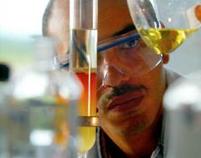 A £100M government fund is set to be released for UK’s fundamental areas of scientific research—future communications, green energy, and new materials. More than 76 development and research projects covering eight priority areas in technology will share the money.
The funds have been made available through the efforts of the Technology Strategy Board. Since it was formed in 2004, the board has funded over 700 projects amounting to £1B.
Studies in business competitiveness, green energy, and healthcare will be greatly benefited. Priorities include works on advanced cell therapies intended to treat wounds and innovations that will allow patients suffering from chronic conditions to be monitored at home.
Environmental priorities include the enhanced system that will maximise small-scale energy production, the technology intended to provide more efficient lighting for shop fronts, and enhanced materials intended for wave and wind farms.
"New research in these important eight key technology areas will make a real difference [in] the economy and [in] our lives. Our work on innovation will help businesses to succeed and improve public services, [and] meet the challenges of the 21st century and enhance people's life chances," said John Denham, secretary of the Innovation, Universities and Skills department.
The Science Council, which represents the professionals and scientific bodies of the United Kingdom, welcomed the newest development. Diana Garnham, the council’s chief executive, said that the eight target areas cover most of the areas in mathematics, technology, engineering, and science.
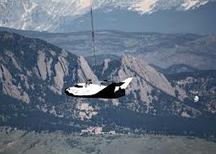 National Aeronautics and Space Administration (NASA) granted a contract, which would bring the cargo in the International Space Station, to Space Exploration Technologies.
The other contract was awarded to Dulles, a Virginia-based Orbital Sciences Corporation.
According to NASA, the two private industries were tasked to deliver supplies in the orbital outpost after the US shuttle fleet retired in 2010.
SpaceX's contract is good for 12 flights worth $1.6 billion US, while the Orbital have eight flights worth $1.9 billion US. The two contracts call for at least 20 tonnes in the cargo mass that must be delivered in the space station.
Orbital and SpaceX won contracts in a third bidder, consortium which was called PlanetSpace and it included the three NASA primary contractors -- Alliant Techsystems, Lockheed Martin and Boeing.
The SpaceX is considered as a new player in the space exploration company, and it successfully completed its first launch in a commercial rocket, the Falcon 1. Falcon 1 was the very first of low cost launch vehicles worth only $7.9 million US each. The company is anticipated to have trips in the space station with the other rocket called Falcon 9.
The Orbital is a more established and famous industry to the Canadians because it was the former owner of Canadarm technology. Orbital was the owner of MacDonald, Associates Ltd. and Dettwiler when it bought Spar Aerospace Ltd’s space robotics in 1999.
 Michael Griffin, NASA Administrator told a congressional supervision panel that China’s surging space plan could introduce moon explorers before Americans make a lunar come back.
Griffin presented before the House Science and Technology Committee the cost estimation at a budget hearing. The panel presented a two-party help for a boost in payments on Orion moonship of NASA that is falling behind schedule, including aeronautical research and unmanned science projects.
Funding woes forced the first trip of Orion of NASA back to March 2015; a six-month glide that provoked a series of queries from Rep. Ken Calvert, R-Calif., if the US can evade its control in space to China.
Griffin, who travelled some of the space installations of China and met with top engineers and scientists, informed the board that China, with its stable economy, is able of a ‘come-from-behind’ lunar hall.
“I cannot speculate and won’t speculate on what China’s intensions are. I just don’t know that”, said Griffin. He also stated “As a matter of technical capability and political will, if the Chinese choose to do so, they can mount a lunar mission within a reasonable number of years, say a decade”.
Just to be confident that he listened right, Calvert asked the chief of space agency if China’s explorers could arrive at the moon before 2020—the time that President Bush led NASA to attain three years ago.
“Of course, yes sir. It’s possible”, Griffin responded. “They could be there before we return.”
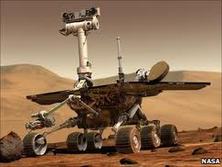 According to NASA, technical problems have forced them to delay for about two years the launching of a landmark mission to Mars, which was scheduled to take off next year.
"We won’t be ready to launch Mars Science Lab by the hoped-for date next year", NASA administrator Michael Griffin said. "Because of a number of factors that need to be addressed, we’re slipping the launch to 2011".
The delay of the mission from its scheduled launch will add approximately US$400 million in launching the Science Laboratory Project to Mars, which aims to study whether there’s microbial life that exists in the planet, including their possible existence today.
"I’ve full confidence in the JPL team to be able to work through the difficulties, but we've determined that trying for '09 would require us to assume too much risk", Griffin said.
Ed Weiler, the associate administrator of NASA, says that the delay is necessary and it allows them to resolve of any other remaining technical malfunctions, proper and careful checking of the system.
"Failure isn’t an option on this mission. The science is too important and the investment of American taxpayer dollars compels us to be absolutely certain that we’ve done everything possible to ensure the success of this flagship planetary mission", Griffin said.
The major reason for delaying the launching of the mission were unsolved problems with the actuator motors, which according to NASA, will help carry the most highly developed suite of mechanisms significant for scientific research on the planet.
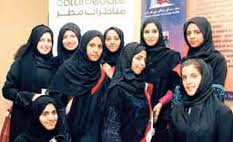 Michael Molson, the chief technology officer of MEEZA, has said that Cloud Services, the provision of dynamically scalable Information Technology (IT) resources over the Internet, will eventually dominate the business IT infrastructure internationally.
During a presentation to information systems and computer science students at Carnegie Mellon University – Qatar, Molson urged the young Qataris to take the torch of technology into the future.
Molson said the students should lead the country towards greater prosperity, and adopt new technologies like Cloud Computing.
MEEZA, a Qatar-based provider of IT solutions and services, is a leading Cloud Services provider.
The development of Cloud Computing means that numerous organisations will no longer require in-house IT infrastructure, but they will instead outsource IT services to a service provider, which will meet their IT needs ‘via the cloud’, or over the Internet.
MEEZA has contributed greatly to the development of local businesses, which include Dohaland and Vodafone Qatar, and has just signed a contract to provide Silatech with IT services and solutions.
The partnership will guarantee that MEEZA will play a major role in the growth of small to medium-sized businesses in Qatar, a fundamental driver of economic development in the country’s 2030 vision.
As part of the presentation, Molson took the students through a usual working day at MEEZA.
The MEEZA official said IT is pivotal to the country’s dream of becoming a knowledge-based economy. He also revealed how Qatar’s future will be shaped by the predominance of digital information and services in everyday lives.
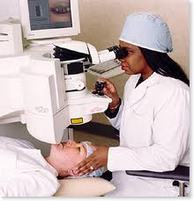 An addition of a high-tech facility to Lasik Surgery Clinic was announced by Asian Hospital and Medical Center during opening of the clinic, which performs laser vision correction.
The clinic’s development is one of the continuing efforts of the hospital to be recognised one of the most highly developed healthcare providers in the whole region of Asia-Pacific.
“With the opening of the Lasik Surgery Clinic, the Asian Hospital and Medical Center is again at the forefront of providing world-class medical service and cutting-edge facilities to patients here and abroad,” says Dr. Leonardo Mangubat, chairman Asian Hospital Department of Ophthalmology.
Lasik Surgery Clinic mainly focuses on refractive surgery (LASIK), a new surgical procedure that helps to permanently fix refractive errors including astigmatism, far-sightedness and near-sightedness.
Dr. Gabriel Juan Heredia says, “We take pride in offering the best laser technology at a very competitive price. Now, patients can have access to this technology and the expertise of highly trained eye surgeons, within the comforts of a modern hospital setting.”
Around 70% of United States eye centres strongly believed in the effectiveness of the 4th generation Excimer Laser, and now the laser will be available to Medical Centers and Asian Hospital patients together with other existing modern devices such as Iris Registration Technology, the Amadeus II Intelligent Mikrokeratome, the Orbscan, and the Wavescan Wavefront System.
Dr. Roderick Feleciano said the VISX Star S4 Excimer Laser ensures safe, fast, painless, and bloodless Epilasik and Lasik procedure.
|










 RSS Feed
RSS Feed